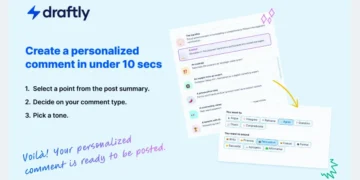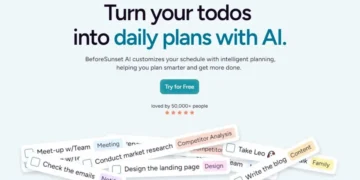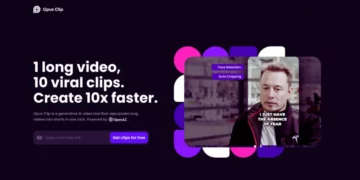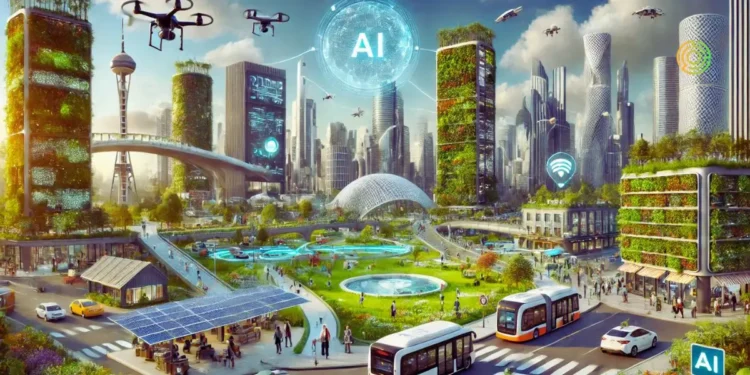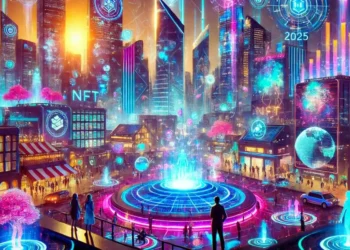Climate change is a growing reality that increasingly affects our daily lives, and cities are at the heart of this issue. With most of the world’s population living in urban areas, and projections indicating that by 2050 two out of every three people will reside in a city, finding sustainable solutions to enhance urban life is crucial. Google is actively contributing to these efforts by leveraging artificial intelligence (AI) to address climate challenges. In this article, we explore eight initiatives where Google is utilizing AI to help cities combat climate change and make urban living more sustainable.
How is Google Using AI to Make Cities More Sustainable?
1. Cooling Cities with AI: Heat Resilience
Have you ever noticed that cities feel significantly hotter compared to rural areas? This phenomenon, known as “urban heat islands,” is caused by concrete and asphalt absorbing and retaining heat. Google has applied AI to satellite imagery to develop a tool called Heat Resilience. This technology enables cities to analyze which areas are most affected by heat and explore strategies to reduce temperatures—such as planting more trees or installing “cool roofs” that reflect sunlight.
For example, Miami-Dade County is already using this tool to create policies that incentivize developers to reduce urban heat through specific design choices. This can significantly impact residents’ quality of life—how often have you found yourself searching for shade on a hot day? By understanding urban heat and addressing it strategically, cities can become more comfortable for everyone.
2. Cool Roofs: Reflecting the Sun, Reducing Energy Use
One solution for combating urban heat is installing cool roofs, which are designed to reflect sunlight rather than absorb it. Google has developed a tool that utilizes aerial imagery and AI algorithms to measure the solar reflectivity of rooftops with high resolution. This allows urban planners to determine which areas would benefit most from installing cool roofs.
Stockton, California, has already started using this data to reduce urban heat islands. By implementing this change at a larger scale, the potential impact on lowering temperatures and reducing air conditioning use is significant—especially in areas where not everyone has access to consistent climate control.
3. Planting Trees Where They’re Needed Most
There is nothing quite as refreshing as sitting under the shade of a large tree on a sunny day. Google’s AI-driven tool, part of the Environmental Insights Explorer, uses aerial images to analyze the tree canopy coverage in cities. This helps identify which neighborhoods are most in need of greenery and allows cities to prioritize tree-planting initiatives.
The city of Austin, Texas, has embraced this tool to plant more trees and place bus stops in locations where more shade is needed. These small changes can have a lasting impact, improving residents’ experiences while navigating the city.
4. Reducing Emissions at Traffic Lights: Project Green Light
Anyone who lives in a large city knows the frustration of being stuck in traffic at an intersection, breathing in car exhaust. Intersections are major contributors to greenhouse gas emissions, and Google’s Project Green Light aims to tackle this issue using AI. By optimizing traffic signals, the project helps reduce congestion and, consequently, emissions.
Since its initial trial in 2021, Project Green Light has been implemented in cities like Rio de Janeiro, Seattle, Bengaluru, and Boston. Fewer emissions and less time spent waiting at lights mean healthier air and a smoother commute for everyone.
5. Efficient Routes in Google Maps
If you use Google Maps, you may have noticed that it now recommends more fuel-efficient routes. Google’s AI takes into account not only time and traffic but also road inclination and constant speed. This update has already helped reduce over 2.4 million metric tons of CO2 emissions—equivalent to removing 500,000 gas-powered cars from the roads for a year.
This feature is a simple yet powerful way for individuals to reduce their carbon footprint without making drastic changes to their lifestyle. It’s all about smart choices and efficiency.
6. Mapping Buildings for a More Sustainable Future: Open Buildings
Have you ever wondered how essential services are managed in cities that aren’t well-mapped? Google’s Open Buildings project is using AI to map over one billion buildings globally—including informal settlements and hard-to-reach areas. This data enables organizations to improve the distribution of essential resources like electricity and healthcare, as well as plan more inclusive urban development.
Mapping previously unmapped areas ensures that everyone is considered in city planning, leading to better infrastructure, services, and ultimately, a more sustainable urban environment for all.
7. Early Detection of Wildfires: FireSat
Wildfires are a growing threat to many cities around the world due to climate change. Google’s FireSat uses a constellation of satellites equipped with AI to detect small wildfires before they grow out of control. This system can detect fires as small as the size of a classroom in less than 20 minutes.
Rapid detection means that firefighting teams can respond faster, potentially stopping a small blaze from becoming a full-scale disaster. It’s an innovative use of technology to protect both urban and rural areas from the devastating impacts of fire.
8. Real-Time Fire Information
FireSat is complemented by another tool that Google has introduced—real-time wildfire maps available in Google Maps and Google Search. These maps, powered by AI, show the boundaries of active fires in real-time, providing critical information to both emergency response teams and people living in affected areas.
The ability to access real-time information on wildfires helps ensure that individuals have the knowledge they need to stay safe during natural disasters. Currently available in 15 countries across Europe and Africa, this tool is expanding to offer even more widespread coverage.
9. Smart Traffic Management
One of the most visible applications of AI in urban environments is in traffic management. Google has developed advanced algorithms that analyze real-time traffic data to optimize traffic flow. By using machine learning, these systems can predict traffic patterns, adjust signal timings, and even reroute vehicles to alleviate congestion. A study found that cities employing smart traffic solutions could reduce travel time by up to 25%, which not only lessens frustration for commuters but also significantly decreases vehicle emissions.
10. Energy Efficiency in Buildings
AI technology is also making strides in enhancing energy efficiency within buildings. Google’s Nest thermostat, for example, learns user behaviors and adjusts heating and cooling automatically, leading to a reduction in energy consumption. According to the U.S. Environmental Protection Agency (EPA), buildings account for nearly 40% of carbon emissions. By integrating AI solutions, cities can drastically reduce their carbon footprints and improve energy efficiency by up to 30%.
11. Waste Management Optimization
In many urban areas, waste management is a major hurdle. Google’s AI can analyze waste collection data to optimize routes for garbage trucks, thereby saving fuel and reducing emissions. Furthermore, by identifying patterns in waste generation, cities can implement better recycling and composting programs, potentially increasing recycling rates by up to 50%. This not only conserves resources but also promotes a circular economy.
12. Enhancing Public Transportation
AI is transforming public transport systems, making them more efficient and user-friendly. Google’s AI-powered transit apps offer real-time updates on bus and train schedules, enabling passengers to make informed decisions. Additionally, cities can analyze travel patterns to optimize routes and schedules, enhancing the overall public transportation experience. Statistics reveal that cities investing in smart public transportation can see ridership increases of 20-40%.
13. Urban Planning and Development
Google is also using AI to assist in urban planning. By analyzing vast amounts of data, including demographics, land use, and environmental impact, AI can help city planners make informed decisions. This means creating more green spaces, reducing urban sprawl, and ensuring that development is sustainable. A report by the McKinsey Global Institute indicates that better urban planning can lead to a 15% increase in economic productivity.
AI for Sustainable and Smart Cities
Connected Lighting Can Make Cities More Sustainable and Smart
Connected lighting systems powered by AI can contribute significantly to making cities smarter and more sustainable. These systems adjust illumination based on real-time data, which can reduce energy use and improve urban safety.
What is AI?
Artificial Intelligence (AI) refers to the simulation of human intelligence processes by machines, especially computer systems. It involves learning, reasoning, and self-correction. AI has broad applications, from simple automation to complex problem-solving in various sectors, including the environment.
AI in Cities
AI is becoming an essential tool in urban development. It helps cities operate more efficiently, improve environmental health, and create a higher quality of life for residents.
Sustainable Partners: AI-Powered Connected Lighting
Cities partnering with technology firms to implement AI-powered connected lighting can achieve sustainability goals more effectively. Such systems help in monitoring energy consumption, reducing carbon footprints, and improving the well-being of city residents.
Potential Dangers of AI
While AI offers immense benefits, it also comes with potential dangers. Issues such as privacy concerns, data security risks, and the environmental impact of large-scale AI implementations are critical aspects that need attention.
Minimizing Risks with Governance and Responsibility
To minimize these risks, it is crucial to develop AI systems with strong governance, accountability, and a focus on responsible usage.
Responsible AI
AI must be developed and used responsibly, with safeguards to protect data privacy and ensure ethical practices. This includes making sure that the deployment of AI does not contribute to inequality or environmental harm.
Estimated Emission Values
Travalyst Coalition
Google has collaborated with the Travalyst Coalition to provide estimated emission values for different travel options, helping consumers make more sustainable choices.
Eco-Certified Hotels
Eco-Certification Badge
Google’s search tools now feature an eco-certification badge for hotels that meet specific environmental standards, making it easier for travelers to find sustainable accommodations.
Environmentally Friendly Options
71%
In recent surveys, 71% of travelers expressed a preference for environmentally friendly travel options, highlighting the importance of offering sustainable alternatives.
Eco-Routes in Google Maps
500,000 Fossil Fuel Vehicles Reduced
Eco-routes in Google Maps have contributed to reducing the number of fossil fuel vehicles on the roads by an equivalent of 500,000 vehicles, emphasizing the significant impact of optimized navigation.
Efficient Vehicles
Fuel Cost Calculator
Google’s tools include a fuel cost calculator that helps users understand the financial and environmental benefits of using fuel-efficient vehicles.
Alternative Transportation
500
Google is promoting alternative transportation methods that are environmentally friendly, encouraging users to choose options that reduce their carbon footprints.
Fuel Savings
Eco-Routes
Google Maps’ eco-routes are designed to save fuel and reduce emissions, making them a great option for eco-conscious users.
Charging Stations
Ultra-Fast Charging
The availability of ultra-fast charging stations is being expanded to ensure that electric vehicle drivers can charge quickly and efficiently during their travels.
Optimized Travel
“Trains from Berlin to Vienna”
Google’s search functions provide optimized travel recommendations, such as efficient train routes, to reduce the environmental impact of travel.
Towards a More Sustainable Future Through Information and Innovation
Every Action Counts
Google is committed to informing and empowering users to make environmentally friendly decisions, one action at a time.
Discover Ways to Get Involved
From individual efforts to community actions, Google provides resources and information to help people contribute to sustainability.
Support Your Organization
Google offers tools that support organizations in their sustainability goals, including access to data and AI resources.
Learn About Our Work
Through various initiatives, Google works to reduce carbon emissions and create a sustainable future.
Together, Reducing 1 GT of Carbon Emissions
Google’s ambitious goal includes reducing 1 gigaton of carbon emissions through collaborative efforts and innovation.
Choose the Most Efficient Route
With Google Maps, users can easily find the most efficient routes, helping to reduce both travel time and emissions.
Buy the Most Efficient Appliances for Your Home
Google provides information on energy-efficient home appliances, aiding users in making sustainable choices for their households.
Find the Flight with the Lowest Carbon Emissions per Passenger
Google’s flight search feature highlights options with the lowest emissions per passenger, helping eco-conscious travelers.
Create Change from Your Home
Small actions at home can have a big impact. Google provides tools and tips for individuals to contribute to a sustainable future from their residences.
Analyze Earth Sciences Data at a Global Scale
Google’s AI tools help analyze Earth sciences data at a global scale, providing insights that can aid in creating more sustainable cities and regions.
Help Create a Resilient, Sustainable Future for Your City or Region
Google’s resources empower cities and regions to take meaningful actions toward a resilient and sustainable future.
Creating a Sustainable Impact at Scale
Google’s initiatives are focused on creating sustainable impacts at a large scale, helping society move towards zero net emissions through innovation and technology.
Reaching Net Zero Emissions Through Innovation and Technology
With ambitious goals and cutting-edge technology, Google is driving the movement toward zero net emissions.
Helping People Benefit from the Clean Energy Transition
Google is actively helping individuals and communities benefit from the transition to clean energy, ensuring a positive impact across the globe.
Progress in Clean Energy Management in Europe
Google has made significant advancements in clean energy management in Europe, supporting sustainability goals across the continent.
Towards Accurate Greenhouse Gas Accounting
Google is working towards a more accurate and efficient way to account for greenhouse gas emissions, enabling better tracking and reduction.
Driving Climate Action at Google and Beyond: Progress Updates
Google’s initiatives extend beyond its operations, with substantial progress in driving climate action globally.
Advances in Water Management
Google is focusing on improving water management practices, helping address the world’s growing water challenges.
Three Ways to Address Water Issues in India
Google has identified three key strategies for tackling water problems in India, leveraging technology and partnerships.
Ask an Expert: How to Achieve a “Water-Positive” Building
Experts share insights on designing buildings that are “water positive,” contributing positively to water management.
A Sustainable Solution that Helped a Town Cool Its Data Center
Google implemented a cooling solution for a data center in a small town, highlighting a sustainable approach to energy management.
Our Commitment to Climate-Conscious Cooling
Google is committed to cooling technologies that align with climate change goals, minimizing environmental impacts.
Driving the Circular Economy
Google supports the circular economy by focusing on reducing waste and reusing materials, promoting sustainability.
Seven Ways We Help Reduce Plastic Pollution
Google has identified and implemented seven strategies to help reduce plastic pollution, supporting global sustainability.
How Startups Support the Circular Economy
Startups are playing a crucial role in advancing the circular economy, with support from Google and other major players.
An Open Invitation to Reduce Plastic Waste
Google invites everyone to join the effort to reduce plastic waste, encouraging community and individual action.
Closing the Plastic Circularity Gap
Google is working on closing the gap in plastic circularity, striving for a future where plastic is reused and recycled effectively.
Protecting and Enhancing Nature and Biodiversity Through Our Campuses and Technologies
Google’s campuses and technologies are designed to protect and enhance nature, contributing to biodiversity preservation.
Detecting Signs of Recovery in Fire-Affected Areas with AI
Google’s AI tools help detect signs of ecological recovery in areas impacted by wildfires, providing critical insights for conservation.
On World Wildlife Day, the Key Word is “Adaptation”
Google recognizes the importance of adaptation on World Wildlife Day, focusing on supporting wildlife in a changing climate.
Working to Protect California Monarch Butterflies
Google is actively involved in efforts to protect the monarch butterflies in California, highlighting their commitment to biodiversity.
Restoring Native Habitats in Silicon Valley
Google is engaged in restoring native habitats in Silicon Valley, supporting local biodiversity and sustainability efforts.
The Road to a Carbon-Free 2030
Google’s goal is to operate on 24/7 carbon-free energy by 2030, aiming for a future where all of its activities are powered without any reliance on fossil fuels.
Sustainable Water Management: Accelerating Positive Change at Google and Beyond
Google is accelerating positive change in sustainable water management practices, focusing on reducing water waste and improving efficiency.
Driving Climate Action at Google and Beyond: Updates on Progress
Google’s climate action initiatives extend beyond their operations, contributing to global efforts towards sustainability.
Conclusion
Google’s initiatives demonstrate that AI can be a powerful ally in addressing climate change. From reducing urban heat islands to optimizing traffic flow and helping cities plan for a sustainable future, these projects show the potential of AI to make a tangible difference in our urban environments.
By harnessing AI for the benefit of cities, Google is paving the way for a future where urban living is more comfortable, efficient, and environmentally friendly. With cities being at the forefront of population growth, the impact of such innovations could improve the quality of life for millions of people around the world.
FAQs
What is an urban heat island?
An urban heat island is an area in a city that is significantly warmer than surrounding rural areas due to human activities, buildings, and the materials used in urban construction that absorb and retain heat.
How does Google use AI to reduce traffic emissions?
Google’s Project Green Light uses AI to optimize traffic signals, which reduces wait times at intersections and decreases greenhouse gas emissions by minimizing the time vehicles spend idling.
What are cool roofs, and how do they help?
Cool roofs are roofs designed to reflect more sunlight and absorb less heat. By using cool roofing materials, buildings stay cooler, reducing the need for air conditioning and consequently cutting energy consumption.
How does Google Maps help reduce carbon emissions?
Google Maps suggests the most fuel-efficient routes based on factors like distance, elevation, and traffic. This helps reduce fuel consumption and carbon emissions from vehicles.
5. How can planting more trees help in urban areas?
Trees provide shade, help lower temperatures in cities, improve air quality, and reduce the urban heat island effect, making cities more comfortable and environmentally friendly.
How can AI help in sustainable cities and communities?
AI can help in sustainable cities by optimizing energy use, reducing emissions, improving traffic flow, and managing resources more efficiently. It also helps in strategic planning for urban development to ensure sustainability.
How can AI contribute to sustainable development?
AI contributes to sustainable development by providing data-driven insights that enhance decision-making, promoting resource efficiency, reducing waste, and tackling environmental challenges like pollution and climate change.
What has Google done for the environment?
Google has implemented various initiatives such as eco-routes in Google Maps, Project Green Light, and partnerships with sustainability coalitions like Travalyst. They are also striving towards operating on 24/7 carbon-free energy by 2030.
What AI Artificial Intelligence application can be used to help with sustainability issues?
AI applications such as Heat Resilience, Project Green Light, and FireSat are examples of how AI can address sustainability issues, helping manage urban heat, optimize traffic, and detect wildfires early.
How does AI contribute to sustainability in cities?
AI contributes to sustainability by optimizing resource use, reducing emissions, and enhancing the quality of urban living. Through predictive analytics and data-driven decision-making, AI systems can identify inefficiencies and propose solutions to make cities more sustainable.
What are some examples of Google’s AI initiatives for sustainable cities?
Some notable initiatives include smart traffic management systems, energy-efficient smart home devices like the Nest thermostat, optimized waste collection routes, and AI-driven public transportation apps.
Can AI improve air quality in urban areas?
Yes! AI can analyze data from air quality sensors and traffic patterns to propose measures that can improve air quality. For instance, by optimizing traffic flow, cities can reduce vehicle emissions, which significantly impacts air pollution levels.
What role does data play in making cities sustainable?
Data is crucial for making informed decisions about urban sustainability. By collecting and analyzing data, city planners and managers can identify trends, forecast issues, and implement targeted solutions that improve sustainability outcomes.
Is the use of AI in cities a long-term solution?
Yes, while the implementation of AI in urban settings is still evolving, it offers a scalable and adaptable approach to addressing sustainability challenges, making it a long-term solution for greener cities.
Follow us on our social networks and keep up to date with everything that happens in the Metaverse!
Twitter Linkedin Facebook Telegram Instagram Google News Amazon Store











